
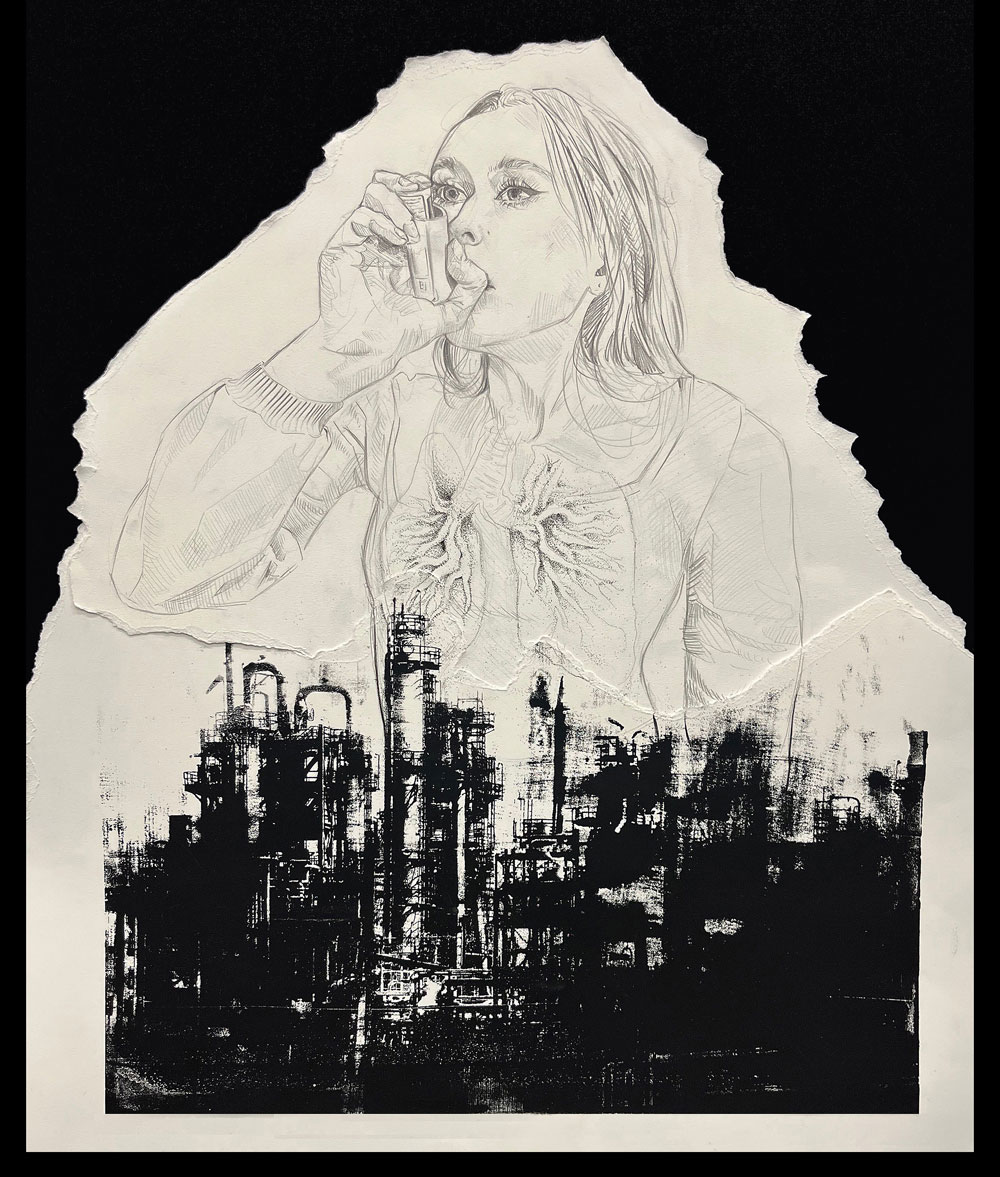
Hazard Zones

Height: 36” x Width: 30” x Depth: 0” | Material(s): Screen print acrylic ink, graphite, ink | Process(es): Distortion=pollution permeating into lungs. Hazard zones affect most vulnerable at expense of profit. | Citation(s): National Health Institute, Global activist publications and research, local news articles (Denver) | Idea(s): Industrial feeling of suburban architecture & the repetitive/homogeneous nature. | Curatorial Note: The screen-printed image of a factory attached to a delicate creative drawing of a person with asthma is a powerful poetic work.
Charlize Loya Torres
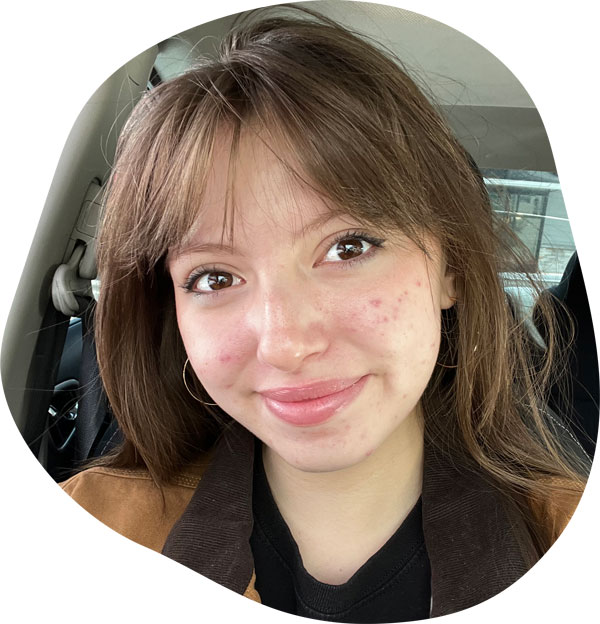

AP DRAWING
Denver School of the Arts Denver, CO, USA
Student statement
Student statement
Does your work reference or draw on a contemporary or historical artmaking style, practice, or tradition? If so, please explain.
Yes, I made an explicit effort to constantly draw on historical art-making style and its significance through all of my art. Depending on the piece, I would switch between different types of printmaking to suit the message of my piece. I wanted to encapsulate the ideas of Andy Warhol through printmaking to become a “machine’” through my art. This “machine” element ties with the industrial feeling of suburban architecture and the repetitive/homogeneous nature of living in America, which all of my pieces are based on. In my ”Window of Opportunities” piece, I specifically chose stenciling as my form of printmaking as it’s often associated with street art and would allow me to work with an unconventional surface. For “A Chronology of Urban Flight,” I specifically referenced “Across the Continent: ’Westward the Course of Empire Takes its Way,’” which is a historical lithograph tied with the westward expansion that occurred during the mid 19th century. I also created that print by printing it with a steamroller at a local event to tie physical industrial machinery with the creation of industrialized urban centers.
What did you do to improve your 2-D, 3-D, or Drawing portfolio skills?
Over the course of my investigation, I went through a lot of experimentation, drafting, sketching, and abandoned a lot of ideas. Specifically, for my “Hazard Zones” piece, I had to teach myself how to make my own screen prints. This included many failed attempts to create screens, burn the images properly, and then printing the image to my liking. Consistent practice and familiarizing myself with an array of mediums helped me improve my skills exponentially. A lot of the time it was my first time creating pieces with these specific types of printmaking mediums and tools, so I allowed myself to have plenty of space to create mistakes and be patient with the process of creating my pieces.

I mainly focused on the idea of American suburbs and the history of its construction as well as the contemporary effects that we see ripple throughout politics, culture, and customs.
Describe the critique practices and feedback you received in AP Art and Design.
In my art class we would go through biweekly critiques in which we would present our in-progress or finished pieces to our peers and our art teacher. Everyone would get the chance to comment on any person's piece, and from there we took feedback. Each student would also have the opportunity to have one-on-ones with our art teachers and be able to receive feedback, criticism, and advice to further push our pieces or creative process into something more thoughtful and insightful. I was also in a classroom with a bunch of my fellow peers, all working individually on our portfolios, but at every opportunity we would help each other out with advice and also encourage each other as we worked through our pieces.
In what ways did your artmaking confidence increase in AP Art and Design?
Along with the constant experimentation and failures, I think through AP Art and Design I was really able to increase my confidence in creating my pieces. A lot of the time it was my first time creating pieces with these specific types of printmaking mediums and tools, so I allowed myself to have plenty of space to create mistakes and be patient with the process of creating my pieces. This flexibility in my creative process really allowed me to push myself to create even bigger and more complex pieces, to an extent that I hadn’t done before. Being able to have the rubric to guide my investigation forced me to be thoughtful and explicit in all of my decisions, which ultimately led me to being more content and satisfied with the end result.
How did you modify or revise your artmaking direction based on feedback?
A large part of my feedback was based on being able to convey the clearest message I could to my audience. In the early stages of my portfolio, I felt that I struggled with being able to be an active communicator through my art. Being able to bounce ideas off my teachers and peers allowed me to really narrow down the scope of my ideas to create pieces that would instantly upon viewing resonate with my audience. Instead of having more vague messaging that required more analyzing and explaining, I opted to use poignant and contrasting visual cues and strong symbolism to further amplify the meaning of my pieces as I progressed with my portfolio.
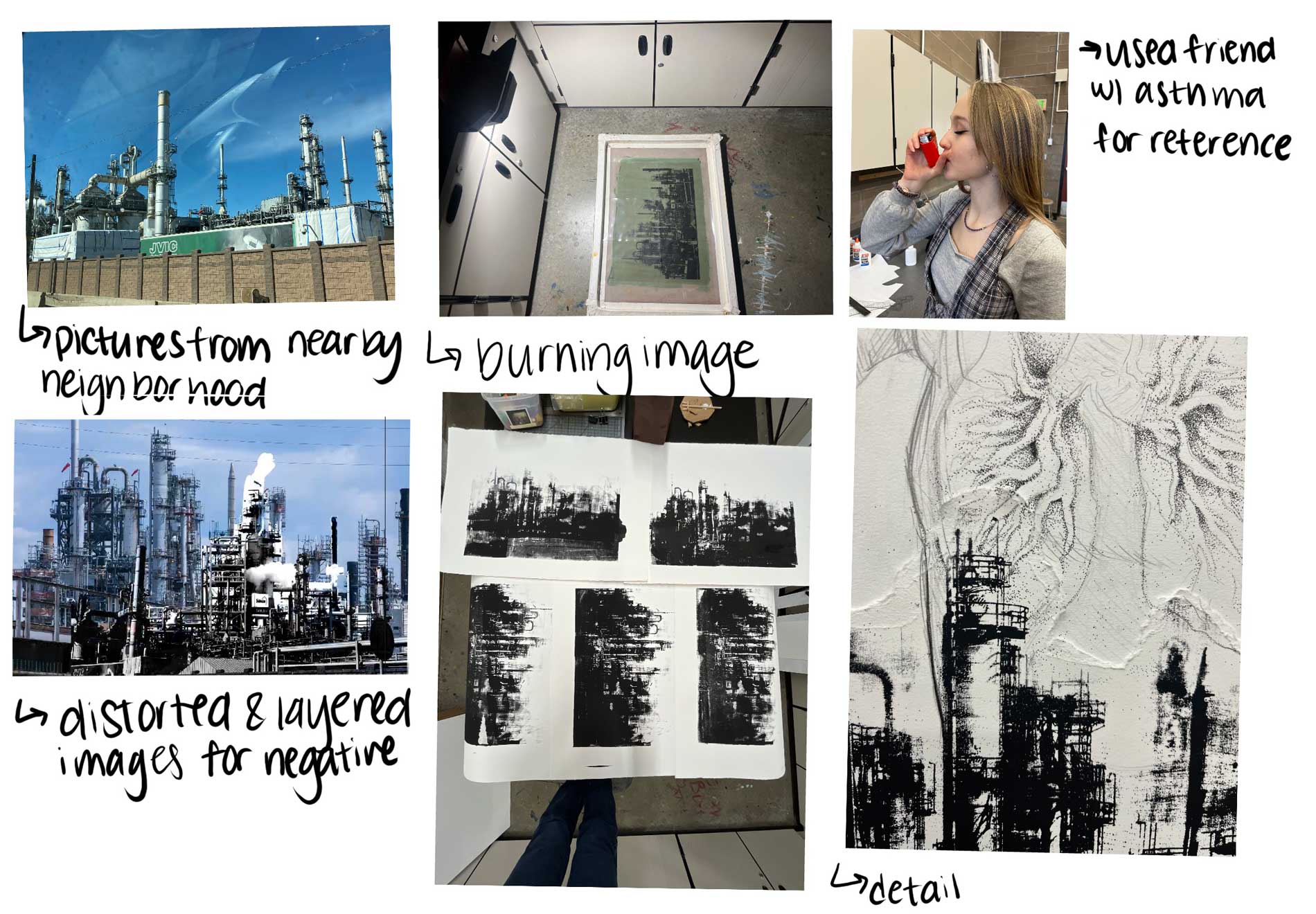
Process(es): Experimented w/ exposure time for distortion, Suncor oil refinery has a history being a hazard zone | Citation(s): National Health Institute, Global activist publications and research, local news articles (Denver) | Idea(s): Industrial feeling of suburban architecture & the repetitive/homogeneous nature. | Curatorial Note: This research is a helpful addition to the portfolio.
How did your classmates help you in the creative process?
My classmates helped me out in large part in the critique elements of my pieces. Although my pieces themselves weren’t collaborative, the brainstorming and sketching periods of my pieces were all very collaborative. I was able to bounce ideas back and forth, give them feedback, and I was also able to collaboratively create an art show with one of my peers! It was a great experience to have a classroom that gave me consistent support and help when I needed it throughout this process.
Did you participate in art shows at your school or in your community?
By the time we're seniors at Denver School of the Arts, part of our final grade for our art class is to present a senior show in collaboration with another one of our peers. The goal of this is to present a professional gallery with art from your portfolio to create a cohesive show in our school's gallery. All of the presentation and gallery installation is done by us and at our own creative disposal. This was a really great opportunity to get feedback from our art teachers, peers, and even academic teachers who helped me install, prepare my artist statements, and finally create an opening for the show. Underclassmen had the opportunity to write feedback and critique us through showings, which we would be allowed to review after our opening night. We would also participate in quarter shows, which occurred at the end of every school quarter and would let us display two to three pieces of art along with all the other visual arts students in our school.
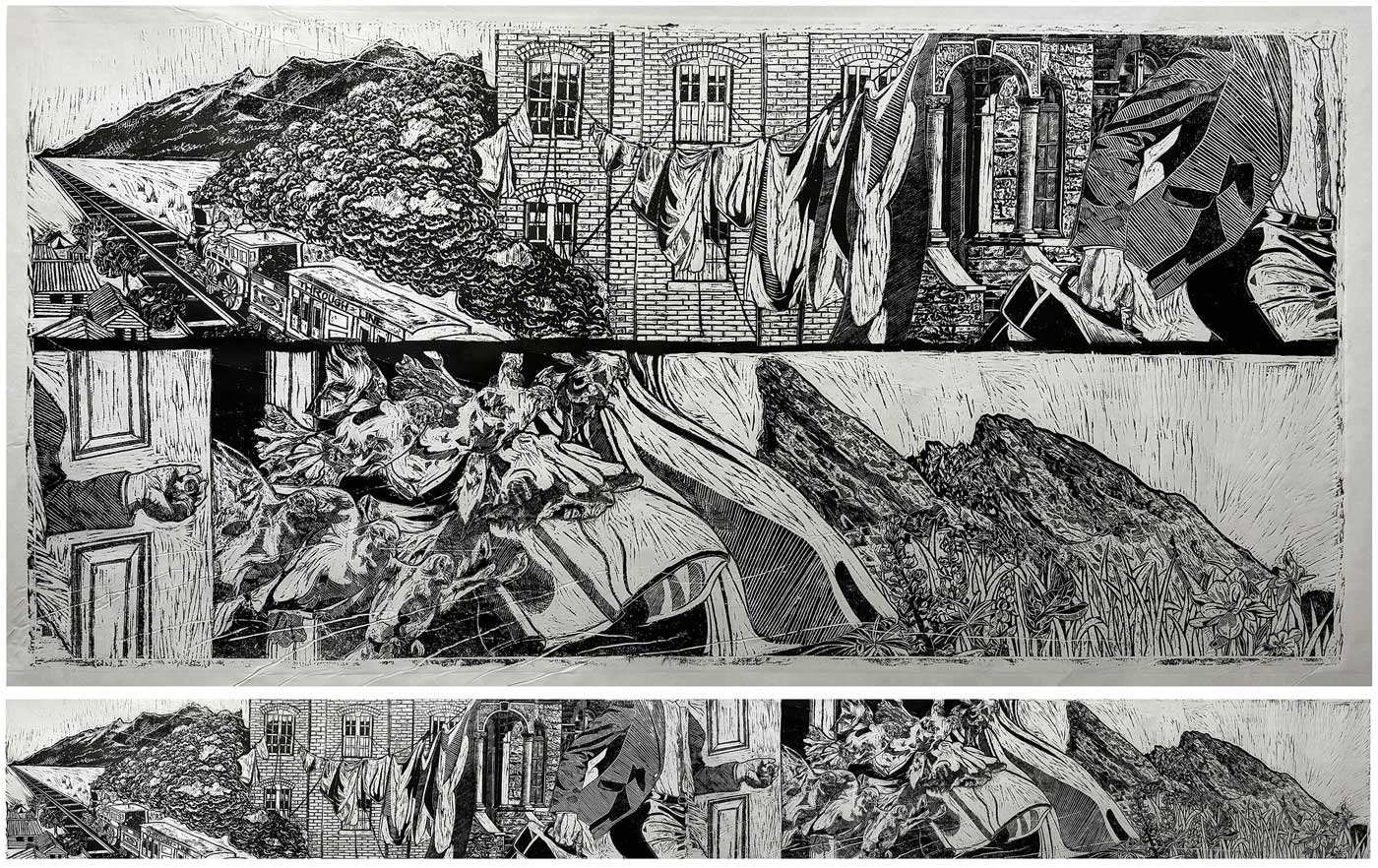

A Chronological Cycle
Height: 18” x Width: 144” x Depth: 0” | Material(s): 3'x6' MDF woodblock with split image, oil based ink, wood carving tools, Dremel, steamroller | Process(es): Timeline progression of my interpretation of the American Dream from Industrial Revolution to today | Idea(s): Experimented with spray paint as medium, wanted an interactive piece to show physicality of metaphor. | Curatorial Note: Strong, well-crafted, large-scale woodblock that continues to support the ideas communicated in the student statement.
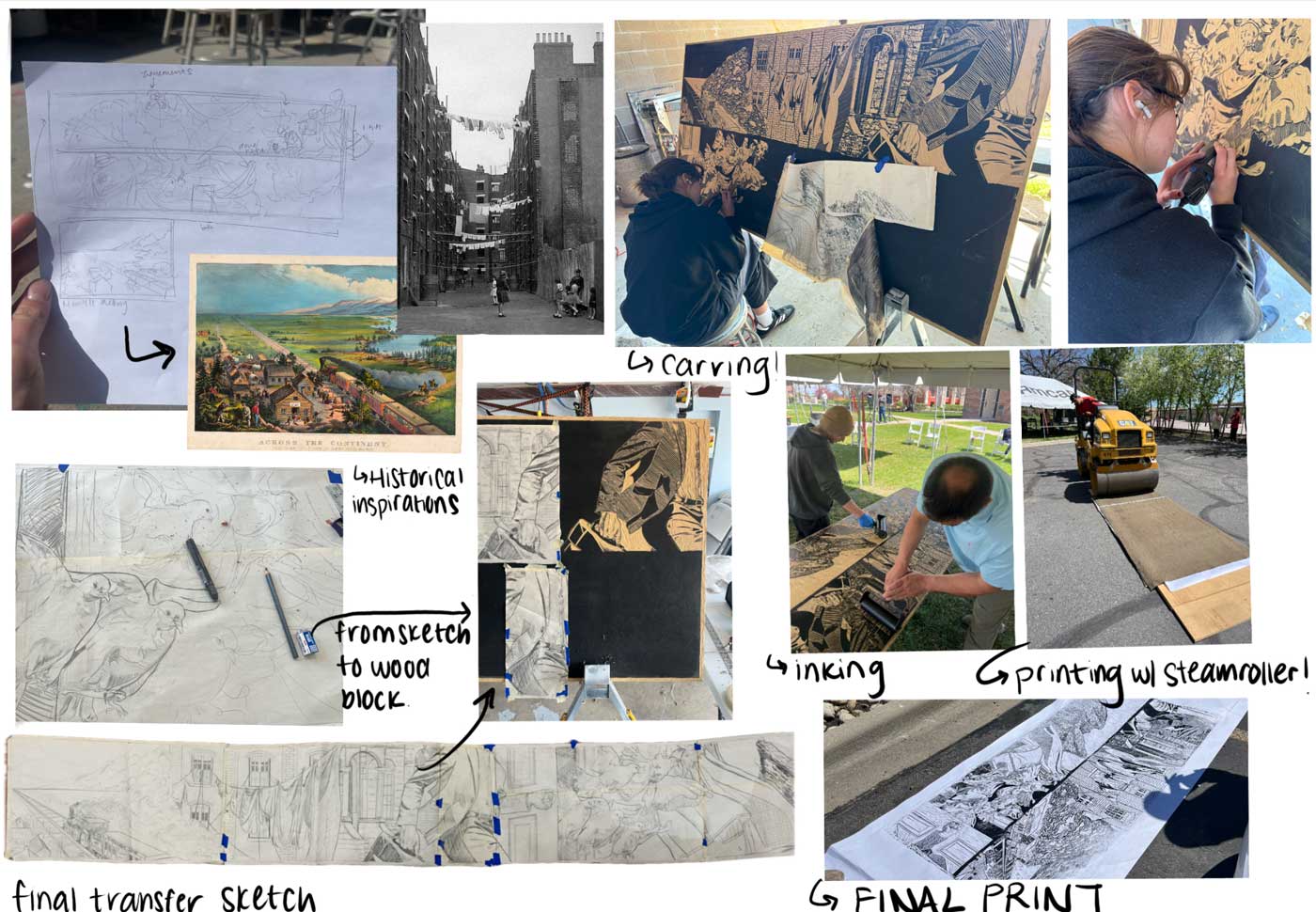
Process(es): Used industrial machine to print piece! inspired by historical lithographs & photos for messaging | Idea(s): Experimented with spray paint as medium, wanted an interactive piece to show physicality of metaphor.
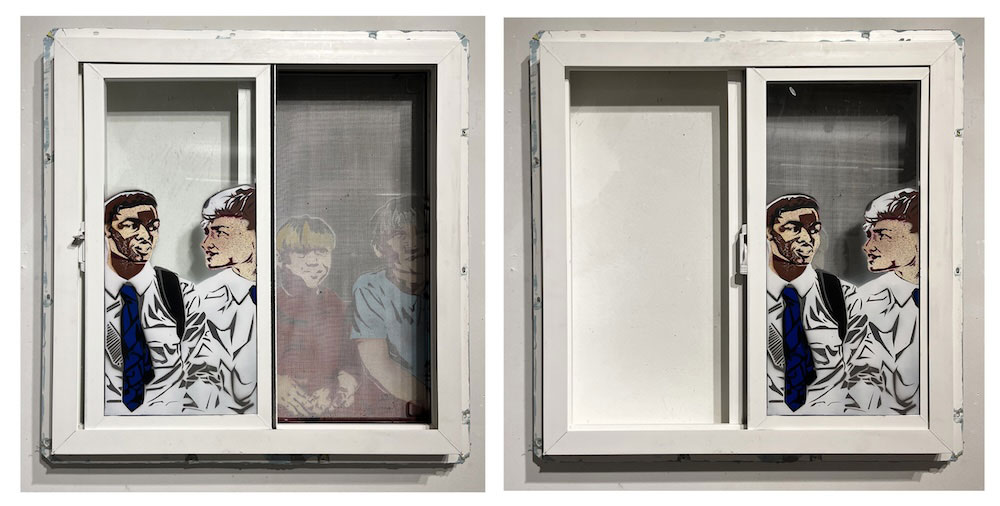

Window of Opportunities
Height: 30” x Width: 28” x Depth: 4” | Material(s): Window, stencil, spray paint | Process(es): Experimented with spray paint as medium: wanted an interactive piece to show physicality of metaphor. | Citation(s): Scholarly articles (Stanford Law), opinion pieces (NYT, Washington Post), and government census' | Idea(s): Experimented with spray paint as medium; wanted an interactive piece to show physicality of metaphor. | Curatorial Note: Well-constructed sculptural collage that does a nice job with the theatrical narrative.

Marty Loftus
Director of Visual Arts
Denver School of the Arts, Denver, CO, USA
Teacher statement
Teacher statement
How did you scaffold writing into the art-making and thinking processes?
Writing is an integral part of the AP Art and Design curriculum and needs to be where students begin their journey. Revision should not only be a component of the visual evidence, but also with their writing. With every finished work, not only do our students need to submit visual documentation, but also 100-character descriptions of their ideation. This is a process that needs to be practiced and revised over time.
What creative programming (i.e., exhibit spaces, mentoring programs, curricular supports) have you implemented to support AP Art and Design students?
In addition to submitting her portfolio to College Board, Charlize developed a senior thesis show, inviting members of our community to interact with her work and question her processes. This experience furthered her understanding of the work and pushed her into new and exciting directions. Our students begin writing gallery reviews for senior shows in sixth grade, and by the time they reach senior year, their language and understanding of the AP curriculum is essentially internalized.
What did you learn from working with your student?
Charlize is passionate about inequities in city planning and infrastructure. As much as I learned from her experiments with materials and processes, I learned much more about the world outside of our classroom. This was truly a gift and something that continues to make this curriculum so engaging for both students and educators.
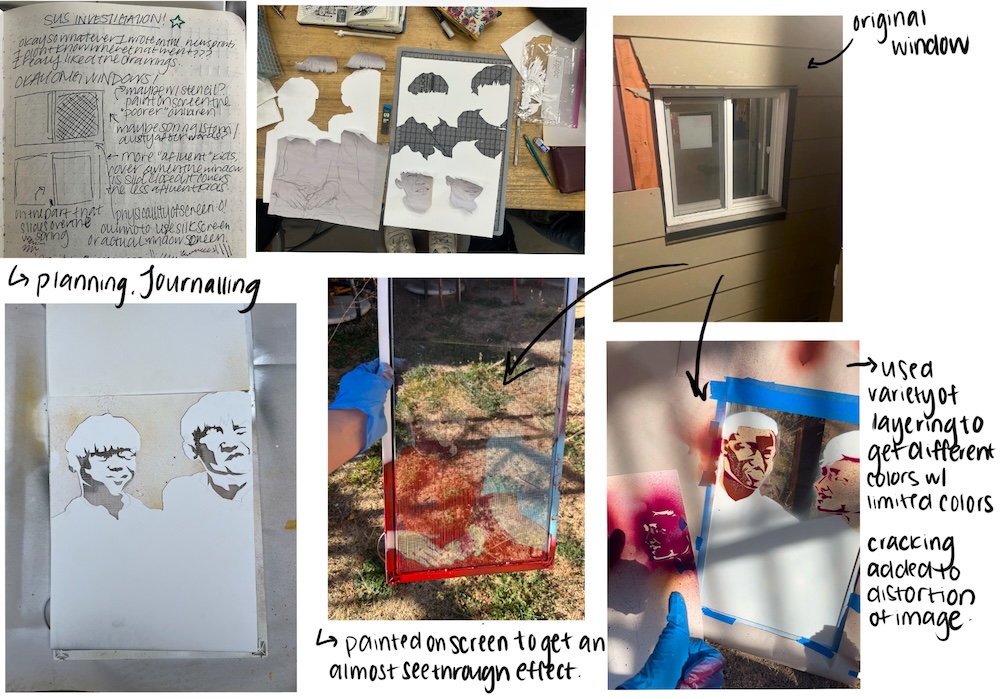
Idea(s): School funding is dependent on a kid's zip code, so opportunities are often not given to lower income students. | Process(es): Experimented with spray paint as medium; wanted an interactive piece to show physicality of metaphor. | Citation(s): Scholarly articles (Stanford Law), opinion pieces (NYT, Washington Post), and government census
Aspen Burkett
Principal
Denver School of the Arts, Denver, CO, USA
Leader Statement
Leader Statement
What are you most proud of regarding your school’s AP Art and Design program, student, and teacher?
On behalf of the entire Denver School of the Arts community, it is with great pride and joy that I extend my heartfelt congratulations to Charlize Loya Torres for being selected for the 2024 AP Art and Design Digital Exhibit. This incredible honor reflects your remarkable talent, creativity, and dedication to your artistic vision. Being chosen for this prestigious exhibit is no small feat, and it is a testament to your ability to produce work that is both conceptually compelling and technically masterful. This achievement not only recognizes your individual brilliance but also highlights the collaborative and inspiring environment fostered by your teachers, Marty Loftus and Jim Cliff. Their instruction, mentorship, and support have undoubtedly played a pivotal role in nurturing your artistic growth, and we are grateful for the dedication they bring to the Denver School of the Arts. Their support and guidance of our students in the Visual Arts Department is unparalleled and can be seen in the joy and recognition their students' artwork receives. Charlize, your work reflects your meticulous development of a creative idea and highlights the intricate process you went through to bring it to life for your audience. Your work is an example for the nation to see the high-level work you and your peers are engaging in as a student at Denver School of the Arts. Your work demonstrates the power of artistry to connect, inspire, and communicate impact with the world. I hope that as others view your work, it will inspire other young artists across the country to be open to taking on challenging topics and serve as a shining representation of the talent cultivated here at Denver School of the Arts. It has been a joy to watch you grow as an artist in your time here at Denver School of the Arts and be a part of your viewing audience and your exploration as an artist. As you celebrate this incredible milestone, please know that we are all cheering you on and are excited to see the continued impact of your artistry in the future. Congratulations once again to you, as well as to Mr. Loftus and Cliff, for this outstanding accomplishment. You have made your school and community immensely proud!
What do you do to support visual arts programming in your school?
I provide feedback on their professional instructional practice and support for their professional development.
What is your advice to other school leaders on how to support an AP Art and Design program?
Trust your staff to know their students and encourage them to build spaces that allow for creative safety and risk-taking.
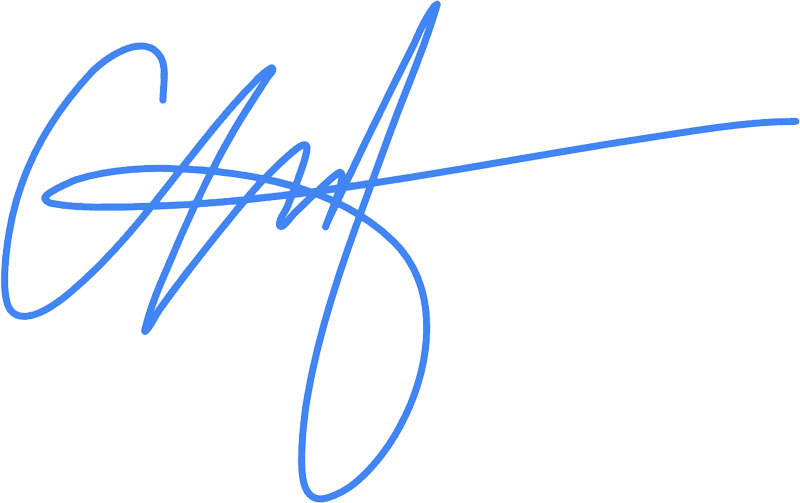
Charlize Loya Torres
